Exploring the best rainwater collection system is not only an environmentally conscious decision but also a smart financial move. By capturing the precious resource that falls on your roof, you can reduce your dependence on the public water supply and lower your monthly bills.
Rainwater harvesting systems, from simple rain barrels to more complex cistern setups, can be integrated into your home with varying levels of investment and DIY project involvement. Let’s delve into the world of rain catchers and find the ideal system for your needs.
Whether you’re a seasoned gardener looking to optimize your irrigation system, or a homeowner aiming to cut down on water waste, the right rainwater collection system can make all the difference.
By the end of this guide, you’ll have a clearer understanding of the essential elements to look for in a system, ensuring you select one that fits your lifestyle and landscape. Stay tuned as we unveil the top performers that promise to efficiently collect and store rainwater for your use.
Top Rainwater Collection Systems of the Year
Here are the top rainwater collection systems of the year on the market:
1. KMJETNIVY Rainwater Collection System– Best Cistern System
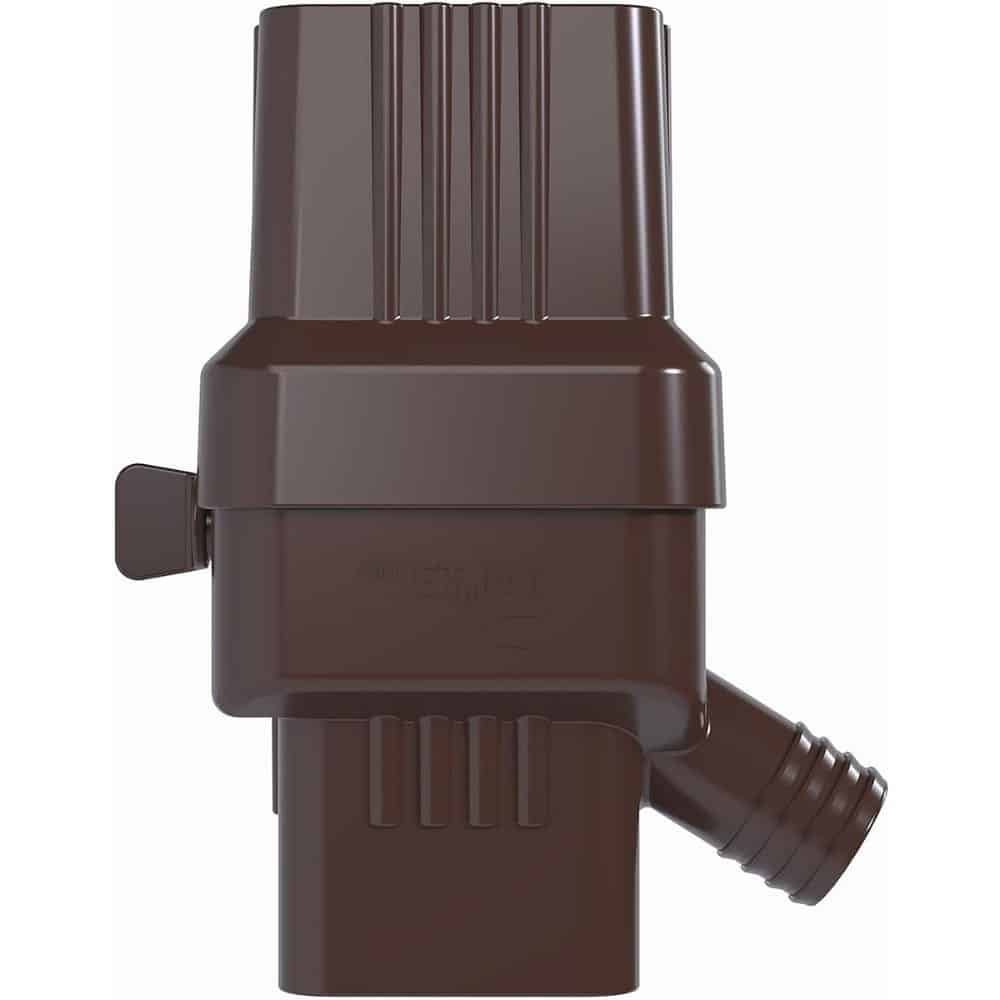
The KMJETNIVY Rainwater Collection System stands out as the best cistern system for those seeking a comprehensive rainwater harvesting setup. This sophisticated system consists of pipes, an underground cistern, and a state-of-the-art filtration system, all designed to maximize the average rainfall your property receives.
Ideal for rainwater collection, the KMJETNIVY system is engineered to seamlessly integrate with your gutters and downspouts, funneling water through underground pipes into a sizable storage tank.
This system excels in areas with higher surface runoff harvesting needs, as it is equipped to handle significant volumes of water. The underground tanks ensure that the collected rainwater remains out of sight, maintaining the aesthetic appeal of your property while providing an ample supply for your home’s non-potable water requirements or as part of an irrigation system.
Pros
- Adjustable rainwater collector
- Integrates with existing gutters and downspouts for a seamless collection
- Designed to fit standard rectangular 2″ x 3″ traditional downspouts
- Advanced filtration system ensures water quality for various uses
Cons
- No hose included
- May require professional installation
2. Good Ideas 50 Gallon Plastic Rain Barrel– Best Overall Rain Barrel
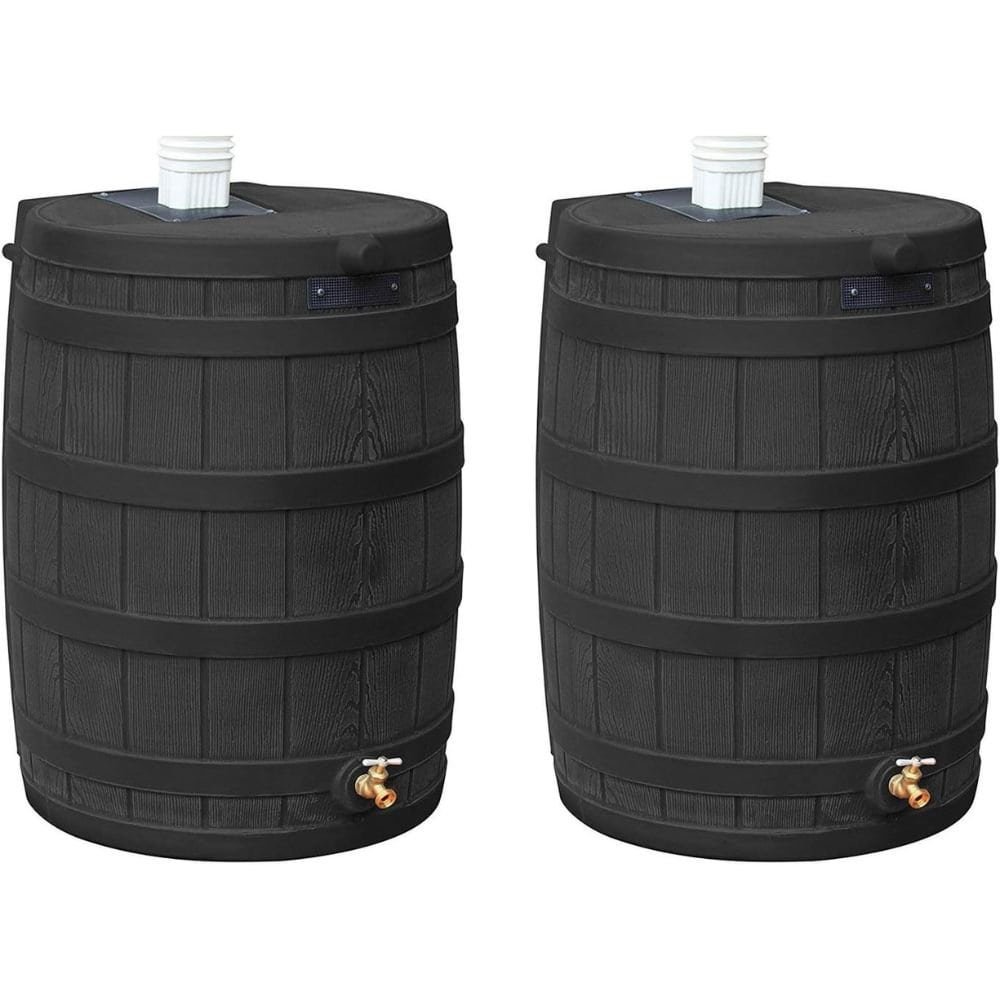
The Good Ideas 50 Gallon Plastic Rain Barrel is the quintessential choice for homeowners who prefer a straightforward, effective rainwater collection solution. This plastic rain barrel boasts a durable design that can withstand the elements while providing a sizable capacity for rainwater storage.
It includes a rain barrel spigot at a convenient height for filling watering cans or connecting a hose. The system design is user-friendly, allowing for easy setup adjacent to any household gutter or downspout.
Additionally, the Good Ideas rain barrel comes with downspout diverters and overflow valves to prevent overfilling during heavy rainfall. This ensures that your barrel remains a reliable resource for garden watering and other outdoor chores, without the worry of spillage or water damage to your foundation.
Pros
- 50-gallon capacity accommodates significant rainwater collection
- Durable plastic construction for long-term outdoor use
- Includes a spigot for easy water access and hose connection
- Downspout diverter prevents overflow and water waste
Cons
- Limited aesthetic options may not suit all landscapes
- May require additional mosquito-proofing measures
3. Good Ideas Savannah Elevated Garden Rain Saver– Most Aesthetic Catchment Solution
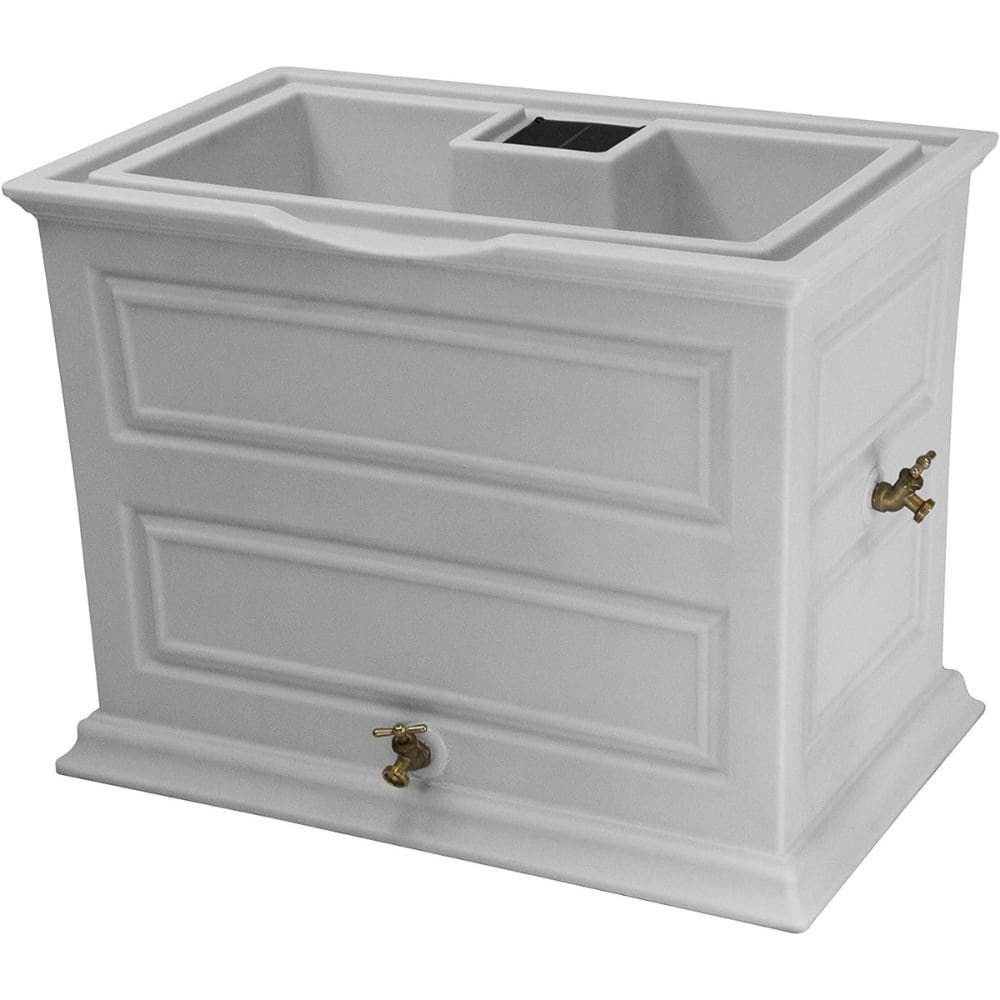
The Good Ideas Savannah Elevated Garden Rain Saver combines functionality with elegance, offering a unique solution for collecting rainwater. This rain barrel not only stores water but also serves as an attractive planter, blending seamlessly into your garden’s landscape. The elevated design allows for easy access to the water without the need to stoop or bend, making it a practical addition to any green space.
Unlike traditional rain barrels, this model enhances the visual appeal of your outdoor area while serving a crucial environmental purpose. The system is ideal for those who value both aesthetics and sustainability, providing a dual function that encourages more homeowners to engage in rainwater collection.
Pros
- Aesthetically pleasing design with built-in planter
- Elevated for easy access and use
- Encourages sustainable water usage
- Blends into garden settings while collecting rainwater
Cons
- Higher price point than basic rain barrels
- Potential for planter drainage to affect water storage
4. VEVOR 100 Gallon Collapsible Rainwater Tank- Best High-Capacity System
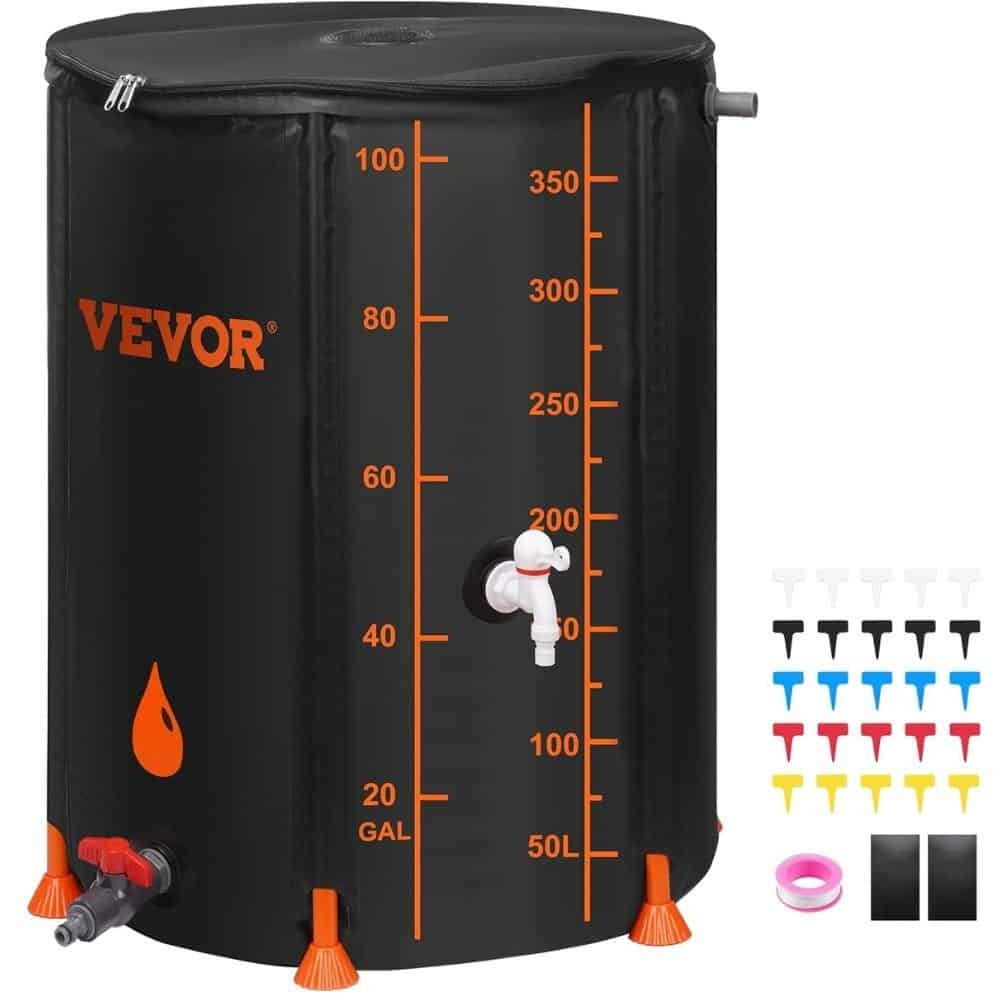
For those with significant water storage needs, the VEVOR 100 Gallon Collapsible Rainwater Tank is an exceptional choice. This tank system is designed to cater to both residential and commercial properties, offering a substantial capacity for collecting rainwater. The collapsible feature ensures that when not in use or for seasonal storage, the tank can be easily folded and stored away, saving valuable space.
Placing the tank on a raised platform will increase water pressure and facilitate easy distribution throughout your property. The VEVOR tank can play a crucial role in reducing monthly water bills and system costs, proving to be an economical investment over time. Moreover, its simple setup makes it one of the most straightforward high-capacity rain barrels available.
Pros
- High capacity of 100 gallons for extensive water storage
- Collapsible design for easy storage and transport
- Suitable for both residential and commercial use
- Reduces monthly water bills with efficient rainwater collection
Cons
- May require a sturdy base or platform for optimal use
- Not as aesthetically pleasing as decorative rain barrels
5. RTS Home Accents 50 Gallon Rain Barrel– Best Budget-Friendly Option
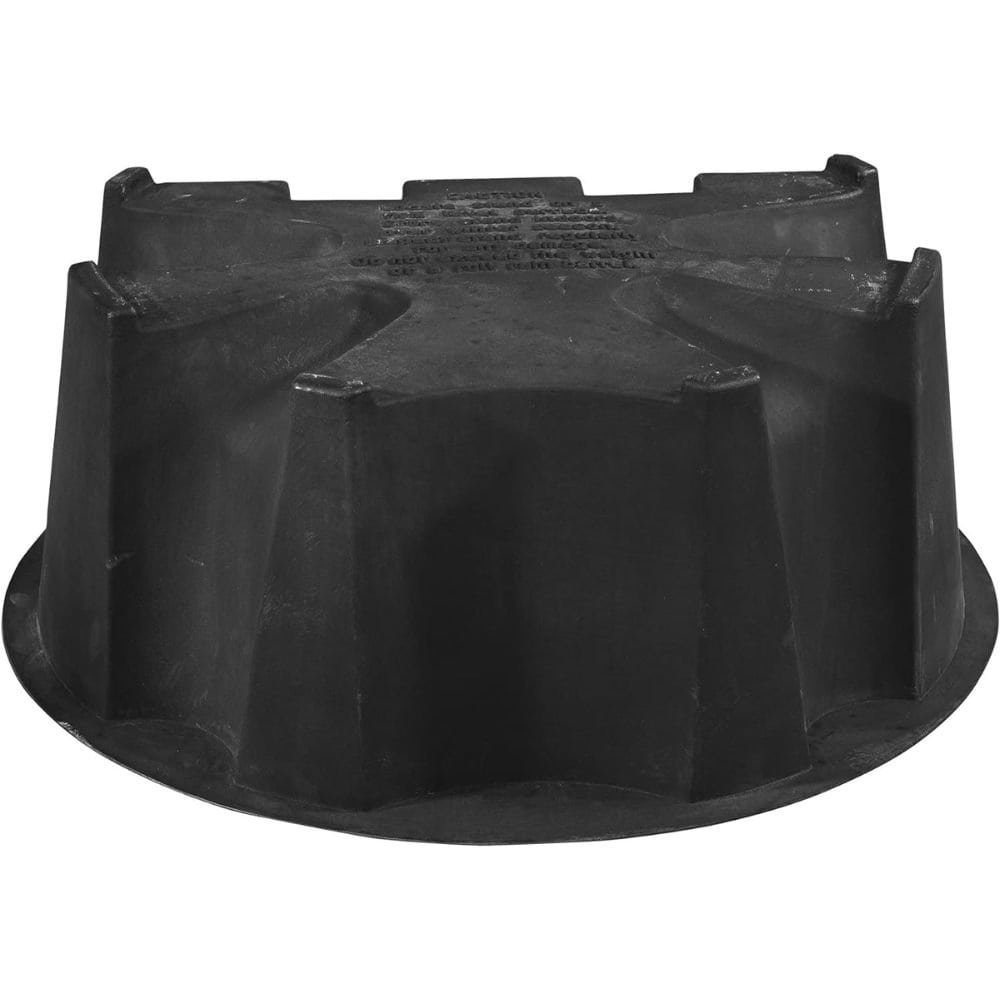
The RTS Home Accents 50 Gallon Rain Barrel is the perfect option for those looking for an affordable yet reliable rainwater collection system. This plastic rain barrel comes with all the necessary features, including a rain barrel spigot for easy dispensing and a lid to keep out debris and insects. Its compact design makes it suitable for smaller spaces, and the 50-gallon capacity is ample for most household gardening needs.
With an emphasis on functionality and simplicity, this barrel provides an efficient way to start harvesting rainwater without breaking the bank. It’s an excellent entry-level option for newcomers to the practice of rainwater collection, offering the essential benefits without any unnecessary frills.
Pros
- Affordable price point for budget-conscious consumers
- Durable plastic construction designed for longevity
- Includes a spigot for convenient water usage
- Compact design ideal for small spaces
Cons
- May require additional accessories for optimal functionality
- Basic design may not complement all exterior decor
6. FCMP Outdoor RC4000-BRN 50-Gallon Water Storage Collection Barrel– Best for Watering Outdoor Plants
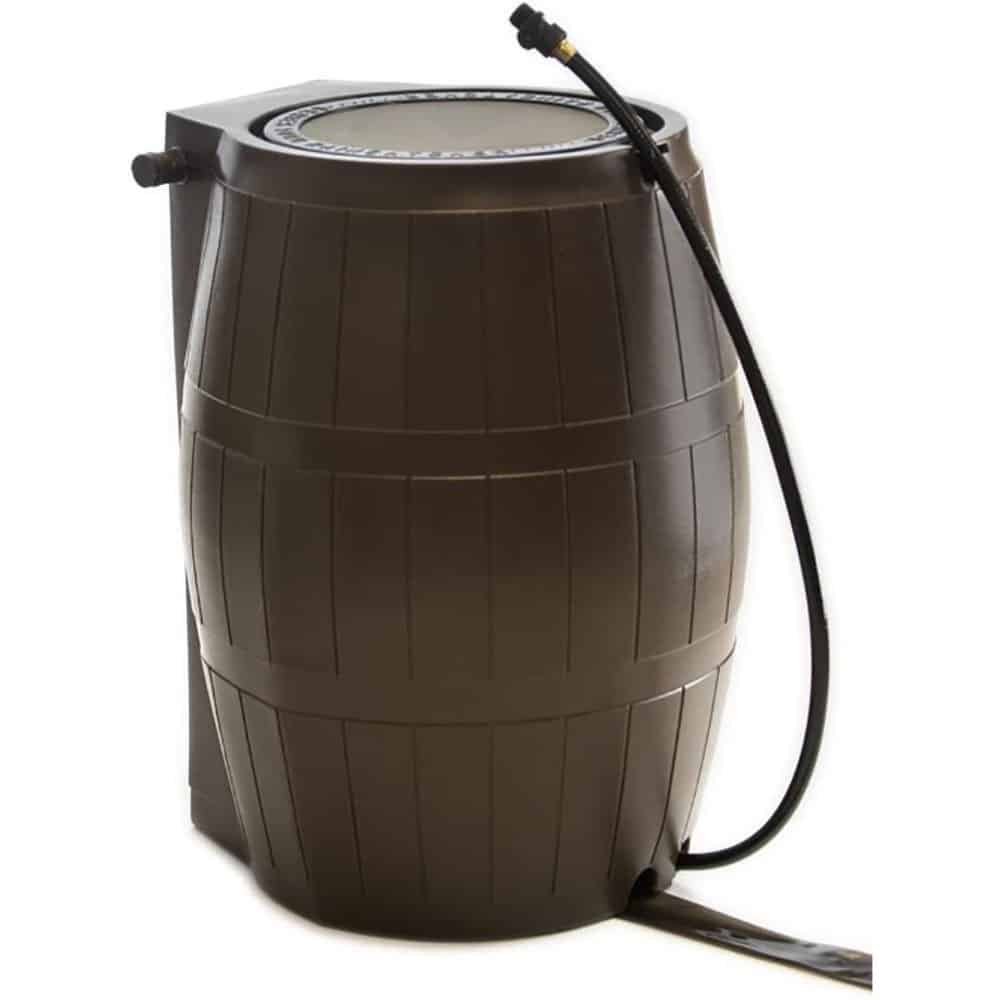
The FCMP Outdoor RC4000-BRN 50-Gallon Water Storage Collection Barrel stands out as an optimal solution for homeowners looking to irrigate their gardens efficiently. This plastic rain barrel boasts a substantial 50-gallon capacity, making it a reliable source for watering outdoor plants.
Its thoughtful design includes a flat back to sit flush against walls, conserving space while maintaining stability. Additionally, the barrel features a rain barrel spigot at a convenient height for easy access and filling watering cans.
Functionally, this barrel excels with its dual overflow ports that allow excess water to be redirected, minimizing flood risk. Multiple tanks can be installed in tandem for increased water storage, making this barrel a versatile option among rainwater harvesting options. Its brown, wood-like texture integrates seamlessly into garden settings, adding a practical yet discreet element to any landscape.
Pros
- Space-saving flat back design
- Made of BPA-free polyethylene plastic
- Dual overflow ports for water management
- Wood-like appearance for natural integration
Cons
- Installation may require additional hardware
- Heavier when full, challenging to move
7. FWAS24 50 Gal. Flo Stormwater Dry Well System– Best for Commercial Locations
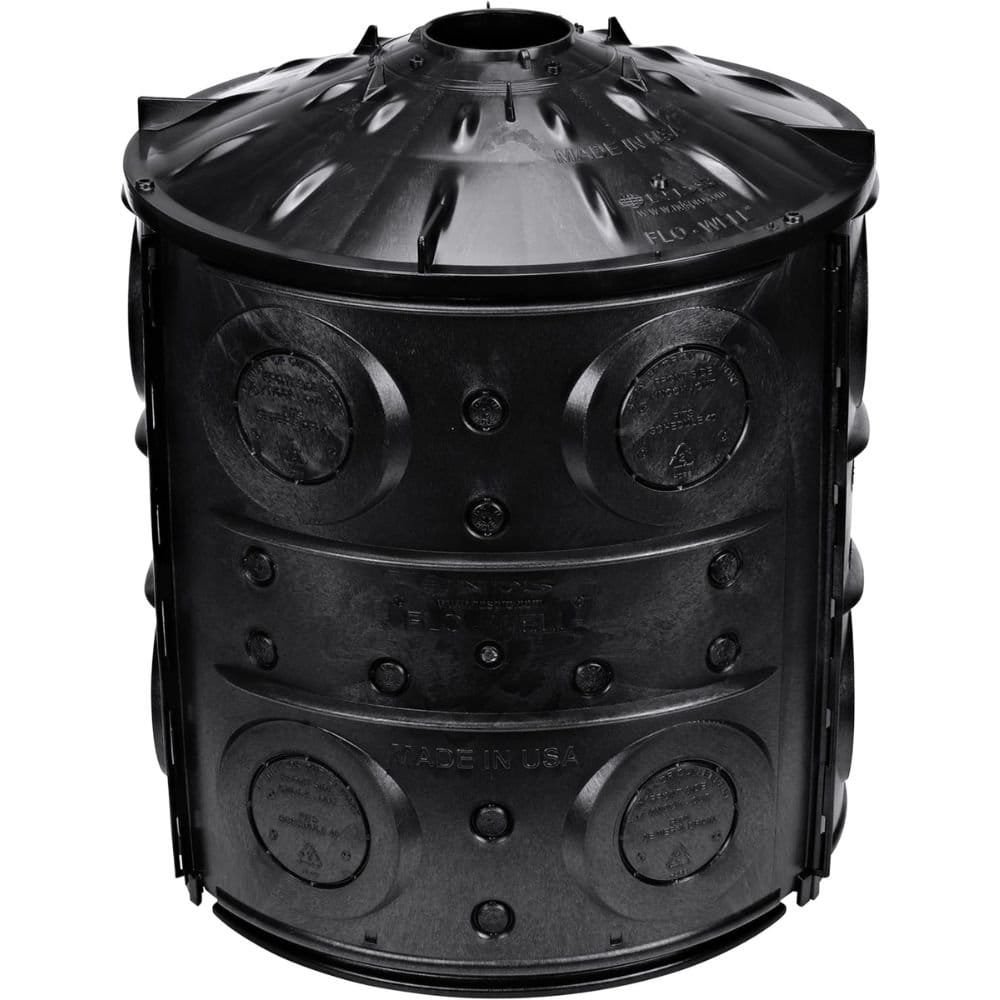
The NDS FWAS24 Flo Stormwater Dry Well System is engineered for commercial applications requiring efficient rainwater management. This system is designed to collect and redirect stormwater, effectively reducing the load on municipal water systems and preventing waterlogging.
With a capacity to handle up to 50 gallons, it serves as a dynamic solution for large-scale rain barrels and storage containers, ensuring that excess water is managed responsibly and sustainably.
The Flo Stormwater Dry Well System is easy to install and can be scaled up by linking multiple units to accommodate higher volumes of water, a feature that significantly impacts system costs by allowing customization as per the site’s requirements. Its robust structure supports light vehicular traffic, offering versatility for installation in various commercial settings such as parking lots and landscaped areas.
Pros
- Large capacity suitable for commercial use
- Modular design allows for scalability
- Durable construction handles light traffic
- Helps reduce strain on municipal systems
- Debris screen prevents blockages
Cons
- Higher initial cost for installation
- May require a base for stability
Factors to Consider When Choosing a Rainwater Collection System
When you decide to harvest rainwater, there are several key factors to consider ensuring you choose a system that meets your specific needs.
1. Size
The size of the rainwater collection system you need depends largely on the intended use and the amount of rainfall your area receives. Smaller systems are suitable for garden watering, while larger tanks can provide for more extensive irrigation or household use.
Consider the space available for installation to ensure the system can be accommodated without causing inconvenience or requiring significant alterations to your property.
Moreover, the size of the rain barrel or tank will directly impact the volume of water you can collect. Larger systems offer more storage capacity, which can be particularly beneficial during dry spells or for properties with higher water demands. Size selection is a balance between practicality, affordability, and your water conservation goals.
2. Assess Your Water Collection Needs
Understanding your water collection needs is crucial for choosing the right rain barrels. Barrels are the simplest and most cost-effective options for collecting rainwater for garden watering, potentially lowering monthly water bills. Estimate the volume of water you typically use for outdoor plants to determine the number of barrels needed.
If you aim to reduce reliance on municipal water for outdoor irrigation, consider a larger system or multiple barrels. Placement on a raised platform can increase water pressure, making it easier to distribute the collected water. Assess both the quantity and the usage patterns to select barrels that align with your requirements.
3. Space and Aesthetic Preferences
When selecting a rainwater collection system, consider the available space on your property. Systems with a larger footprint may require more planning and adaptation of the surrounding area.
Additionally, think about how the system will blend with your landscape’s aesthetic. Options range from utilitarian to decorative, with some designed to mimic traditional garden elements.
The placement of the system should also be strategic, ideally in proximity to impermeable surfaces like roofs for optimal water collection and near areas of use for convenience. Aesthetics should not compromise functionality, but with the variety of designs available, finding a system that complements your outdoor space is feasible.
4. System Quality and Durability
The quality and durability of a rainwater collection system are paramount to ensure longevity and reliability. High-quality materials can withstand exposure to the elements and reduce the need for frequent replacements. Look for systems with UV protection to prevent degradation from sunlight and robust construction to handle heavy rain and wind.
Additionally, consider the system’s resistance to corrosion and its ability to maintain water quality. A good rainwater collection system should integrate seamlessly with existing landscape and architectural features while contributing to a sustainable water use strategy.
5. Ease of Installation and Maintenance
Rainwater collection systems should be straightforward to install, with clear instructions and minimal need for specialized tools or professional assistance. Systems that are easy to set up encourage more homeowners to adopt rainwater harvesting. Maintenance is another critical aspect; a user-friendly system with accessible components will simplify the cleaning process and ensure proper functioning over time.
Regular inspections and cleaning of gutters, screens, and filters are necessary to maintain the efficiency of rainwater collection systems. Choose a system that offers ease of access for these tasks to ensure consistent water quality and system performance.
6. Prices and Budgeting
Rainwater catchment systems come in a range of prices, influenced by materials, storage capacity, and additional features. It’s important to balance initial costs with long-term savings. Investing in a system with adequate storage capacity may have a higher upfront cost but can lead to significant savings on rain collection system water bills over time.
Consider not only the purchase price but also installation costs and potential maintenance expenses. Budgeting for a quality system that meets your needs without overextending financially will help ensure satisfaction with your rainwater harvesting endeavor.
Frequently Asked Questions About Rainwater Collection
1. How do you maintain a rain collection system?
Maintaining rainwater harvesting systems is crucial to ensure water quality and system longevity. Firstly, inspect gutters and downspouts regularly to remove leaves and debris, preventing clogs that could impede water flow. Secondly, check your system’s filters and screens periodically and clean them to prevent organic matter from entering your storage tanks, which can lead to algae growth and contamination.
Additionally, you should empty and clean your storage tanks at least once a year, ideally before the rainy season begins, to remove any sediment or buildup. Regularly check for leaks or damage to the system, and repair any issues promptly to maintain the system’s efficiency and effectiveness.
2. What are the necessary tools and equipment for rainwater collection setup?
Setting up a rainwater collection system requires a few key tools and equipment. First and foremost, you’ll need rain barrels or a cistern, depending on the size of your system. For securing gutters and downspouts, have on hand a drill, screws, and brackets. You’ll also need a fine mesh screen or filter to keep debris out, and a ball valve to control the water flow from your barrels.
For systems intended for storing rainwater for landscape irrigation, additional components like a hose, connections, and a pump may be necessary to distribute water efficiently. It’s also important to use sturdy materials, such as corrugated steel for larger systems, to ensure durability. Always ensure your setup complies with local regulations in the United States regarding collecting rainwater and irrigating your garden responsibly.
3. Can you make your own rain barrel?
Absolutely, creating your own rain barrel is a great DIY project for collecting rainwater. You can repurpose a large plastic drum or container by adding a spigot, an overflow valve, and a screen on top to keep out debris and insects. Ensure the container is food-grade if you plan to use the water for edible plants, and thoroughly clean it if it previously held other substances.
When designing your rain barrel, consider how you’ll connect it to your downspout and whether you’ll need a stand to elevate it for easier access and increased water pressure. With the right tools and a bit of craftsmanship, you can create a functional rain barrel that helps conserve water and reduce your utility bills.
4. Will rain barrels overflow?
Rain barrels can overflow if they are not properly managed or if there is an exceptionally heavy rainstorm. To prevent this, ensure your rain barrel has an overflow valve that directs excess water away from your home’s foundation. Some barrels come with a linking feature that allows you to connect multiple barrels together, increasing capacity and reducing overflow risk.
Strategic placement of your rain barrel can also mitigate overflow issues. Place it on a permeable surface such as gravel or grass, which can absorb any overflow water. Additionally, regular monitoring and using the collected rainwater between rain events will help manage the water level in your barrel.
5. Do rain barrels attract mosquitoes?
Rain barrels can become breeding grounds for mosquitoes if they are not properly maintained. To prevent mosquitoes from using your barrel for laying eggs, ensure that it is sealed with a tight-fitting lid or a fine mesh screen that allows water in but keeps insects out. Regularly inspect your rain barrels for gaps or holes and repair them promptly to maintain an effective barrier against mosquitoes.
Additionally, consider adding a few drops of non-toxic oil or using mosquito dunks, which are safe for storing rainwater and do not harm plants. These methods create a surface film that deters mosquitoes from laying eggs. By taking these precautions, you can enjoy the benefits of collecting rainwater without the nuisance of mosquitoes.
6. How much can rain barrels save on watering?
Rain barrels can lead to significant savings on your water bill, particularly during the growing season when landscape irrigation demands are high. A single rain barrel can save approximately 1,300 gallons of water during peak summer months. The savings multiply with each additional barrel or if you opt for a collapsible rain barrel with a larger capacity.
By using rain barrels to capture and store rainwater, you can reduce your reliance on municipal water and the associated costs. The amount of savings will depend on the size of your garden, the climate in your area, and how efficiently you use the collected water. Overall, rain barrels are a cost-effective solution for gardeners looking to lower their environmental impact and save on watering expenses.
Summing Up the Benefits of the Best Rainwater Collection System
The quest for the best rainwater collection system is marked by a multitude of advantages, including mitigating stormwater runoff, which can damage the foundation of structures.
By channeling rainwater runoff into rain gardens or storage units like the FCMP Outdoor RC4000-BRN 50-Gallon Water Storage Collection Barrel, you reduce the burden on storm drains and utilize harvested rainwater for various purposes.
Systems built with durable materials like polyvinyl chloride ensure longevity and features like a metal spigot offer convenience for attaching a garden hose. From the ease of the installation process to the benefits of rainwater harvesting for garden irrigation, the selected systems cater to needs ranging from 1 to 2-person households to commercial locations.
Embracing these systems not only conserves water but also contributes to a sustainable environment. By integrating the best rainwater harvesting solutions in your home, you can enjoy these multifaceted benefits and contribute to a more sustainable future.


